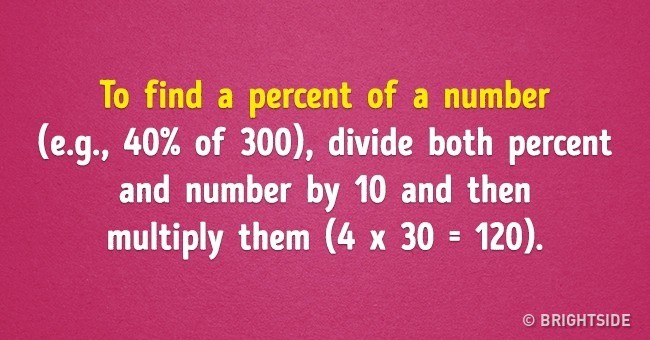12+ Simple Math Hacks To Master Division

Division, one of the fundamental operations in mathematics, can sometimes seem daunting, especially when dealing with large numbers or when attempting to divide without a calculator. However, there are several simple yet powerful math hacks that can make division easier, faster, and more accurate. Mastering these hacks can significantly improve your mathematical skills and make you more proficient in handling division problems. Here are 12+ simple math hacks to master division:
1. Multiplication Tables
One of the most basic yet potent hacks for division is having a strong grasp of multiplication tables. Since division is essentially the inverse operation of multiplication, knowing your multiplication tables backwards and forwards can greatly aid in division. For example, if you know that 6 * 9 = 54, you can easily deduce that 54 / 9 = 6.
2. Break Down Numbers
When dividing large numbers, it can be helpful to break them down into simpler components. For instance, if you need to divide 480 by 16, you can break down 480 into easier-to-handle numbers like 400 and 80, then divide each part by 16 (400 / 16 = 25 and 80 / 16 = 5), and finally add the results (25 + 5 = 30).
3. Use Mental Math Tricks
There are several mental math tricks that can simplify division. For example, to divide a number by 5, you can simply multiply it by 2 and then divide by 10 (since 5 * 2 = 10). This trick works because multiplying by 2 is easier for many people, and dividing by 10 is straightforward.
4. The “Nines” Trick for Checking
A clever trick to check division problems involves the use of nines. When you divide one number by another, the remainder when the dividend (the number being divided) is divided by 9 should be the same as the remainder when the quotient (result of division) multiplied by the divisor (the number by which we are dividing) plus the remainder (of the original division) is divided by 9. This can be a bit complex but is a powerful tool for verifying calculations.
5. Estimation
Estimation is a vital skill in mathematics, especially in division. Being able to estimate the result of a division problem can help you quickly identify any mistakes and provide a ballpark figure to work with. For example, when dividing 432 by 12, you can estimate that the result will be close to 40 (since 10 * 12 = 120 and 40 * 12 = 480), and then adjust your estimate (in this case, realizing the actual result will be between 30 and 40, with 36 being the correct answer).
6. Leverage Patterns and Relationships
Identifying patterns and relationships between numbers can greatly simplify division. For example, recognizing that 25 is one-fourth of 100 can help you quickly divide numbers by 4 when they are related to 100 or multiples of 25.
7. Use Technology Strategically
In today’s digital age, calculators and computers can be invaluable tools for division, especially for complex problems or when speed is essential. However, it’s crucial to understand the underlying mathematics rather than solely relying on technology.
8. Practice with Real-World Scenarios
Practicing division with real-world scenarios can make the operation feel more tangible and relevant. For example, if you’re planning a dinner party and need to divide a certain amount of food among your guests, practicing division in this context can make it more engaging and meaningful.
9. Understand the Concept of Remainders
Mastering the concept of remainders is crucial for division. Remainders tell you how many times one number fits into another and what’s left over. This concept is essential for problems that don’t divide evenly.
10. Learn Division Facts
Similar to multiplication facts, learning division facts for common numbers (e.g., dividing by 2, 5, 10) can speed up your division skills. For example, knowing that 24 divided by 3 is 8, or that 50 divided by 10 is 5, can be very helpful.
11. Apply Algebraic Thinking
For more complex division problems, especially those involving variables, applying algebraic thinking can be beneficial. This might involve simplifying expressions or solving for unknowns in division equations.
12. Reinforce with Games and Puzzles
Finally, reinforcing division skills through games, puzzles, and quizzes can make learning and practicing division more enjoyable and engaging. This can include board games, card games, or online resources that challenge your division skills in a fun and interactive way.
Additional Tips:
- Review and Practice Regularly: Consistency is key when it comes to improving at division. Regular review and practice, even if just for a few minutes a day, can significantly enhance your skills.
- Use Visual Aids: Visual aids like charts, graphs, or even simple diagrams can help in understanding and memorizing division facts, especially for visual learners.
- Seek Help When Needed: Don’t hesitate to seek help if you’re struggling with division. Tutors, teachers, and online resources are all valuable tools for mastering division.
By incorporating these simple yet effective math hacks into your practice routine, you can significantly improve your division skills, making you more adept at handling division problems with ease and accuracy. Remember, the key to mastery is consistent practice and a willingness to learn and adapt new strategies.
